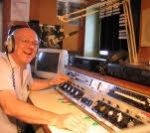How Wires Work Part 4 – Balance and Shields

[March 2012] Our discussion of How Wires Work concludes as the Cowboy, Curt Flick, shows how the interaction between wires and shields presents solutions – and potential problems.
A major consideration when wiring a studio or transmitter site is to keep the audio clean, free of buzzes, clicks, and other noises. Some think the best way to do this is to put the shields up when-ever possible.
However, that approach really is not a good one. Shields can be deceiving. You may think you are protecting your audio – or your starship – but that may not make it so.
Shields Up!
The shield on a wire prevents the inner conductor(s) from having the same impedance to the universe as the outside of the shield does. Most of the time, shielding wire usually makes the problems of buzzes, clicks, and noise worse.
There are two exceptions.
One, is when all of the noise(s) we are trying to avoid are high enough in frequency for the skin affect on the shield to prevent their migration to the inside surface of the shield. Usually, this cannot happen within the audio range, or below.
The other, is when we include within the shield another conductor against which to balance our signal conductor, plus the shield surface skin affect combined. If we do it right, both conductors will have the same impedance with respect to the inside surface of the shield and, one hopes, to the universe outside of the shield.
If we do not do it right, then we bring whatever imbalance that exists inside the shield – and the shield itself will prevent the universe from creating balance on the other conductor.
Uncommon Mode
These noises and other undesired currents are exactly the same as what we refer to as common mode currents on balanced pairs.
Since they do appear on the shield, but cannot be canceled by also appearing on the inner conductor, they cannot be eliminated by simple cancellation at our circuit destination, regardless of what type of termination is used.
The shield itself prevents the conductors within from having the same impedance to the universe as the outside of the shield, and prevents the inside surface of the shield from ever having the same impedance to the universe as the outside of the shield, so the shield itself can never, ever, by any means, ever be balanced.
Furthermore, shielding always brings at least this unbalance into the mix whenever, and wherever, shielding is used. Multiple ground connections simply lead to ground loops, making things worse. Hence, shielding will almost always make whatever problems worse, not better.
Careful treatment of the shield then becomes mandatory because the inside of the shield is a third conductor in very close proximity to our signal pair – and the outside of the shield is a fourth conductor. The unbalance between the inside and outside is impossible to eliminate, so anything that is carried in the shield will affect our signal pairs. Once it does get in there, it is impossible to get it out.
The only hope is that whatever noise can be confined to the fourth conductor, the outside of the shield only.
Flat Earth Society
The attitude that shielding always is better is very much a Flat Earth attitude dating from the first experiments with coaxial conductors.
As we mentioned before, shielding works fine – if the signal carried on the outside of the shield is above supersonic. Too many people assume that to mean it works in all cases. It does not. Below supersonic it falls apart, and the lower in frequency you go (power line/AC?), the worse it gets.
In fact, the lower the frequency, the deeper through the shield the noise is carried, so the closer it is forced against our signal wire. And noise, like any current, generates its own magnetic field.
If our signal wires are crossed by this field, then some of that energy in the field will induce its own sympathetic signal in out signal wires.
Hence, we will have introduced noise onto our wires, along with our desired signal. Once this has happened, our only hope is filtering at the signal destination.
The telephone company has known this for a century. The railroad telegraph (which developed the concepts and principles of long path signal wires) has known it even longer, about two centuries.
Some broadcast engineers even today, two hundred years later, still cling to outdated ideas long ago proven false.
When it Works, When it Works Better
There are some cases where how shielding is connected just does not matter, such as from transmitter to antenna coax. The reason it does not matter, is that the selectivity of the antenna and/or matching circuitry will filter out the noise that is on the unbalanced circuit.
Again, the lesson from history is entrenched in the old railroad telegraph. Originally, they strung a single conductor, running miles in length alongside the tracks. The signal return path was through the ground – literally.
Then some operator, somewhere, connected his return path to the steel rails and things worked better. Much better!
This was then analyzed and experiments were done to better understand what was going on.
The Scientific Method
Railroad telegraphy began using the rails as their return. This worked well, unless or until a passing train either improved the connections between rails – or made them worse. Next, a second conductor was strung along the poles. That worked even better. But the signal was still affected by electrical storms.
By accident, a wire run was strung with the wires much closer together, and as a result, there was far less effect from storms. Good engineers took it further, putting the wires closer and closer together, and it worked better and better. Others got the brilliant idea to twist the wires together, so that they could be strung together in one pass, instead of two passes. Lo and behold, they achieved the best performance yet.
Engineers experimented with tighter twists, but found little to no improvement with the telegraph signals.
Even Better Results
twists were found to the reduce noise well below levels detectable by the wired telegraph mechanical electromagnetic detectors.
Enter a new form of noise: Broadcasting. And for high fidelity audio, tight twists were found to be very, very beneficial – to a point. Approximately one twist per foot was decided to be the ultimate, and was used for many years. We call it CAT-3 (Category 3) rated wire.
The rating describes the upper bandwidth such a pair can carry reliably. Along comes Ethernet with its faster and higher bandwidth signals. Over the years, simply expanding on the old technology used so reliably by railroad telegraph has brought us to today’s CAT-6.
Still, there are times when simply shielding audio pairs can afford some resistance to noise.
When adjacent conductors are unshielded and carrying low frequency energy, such as 60 Hz AC power lines, shielding can be very effective, but it is also true that if the wires are twisted and installed correctly so that their balance and inherent self-shielding is not upset, adding a shield will almost always cause more problems than it could every hope to help.
On the other hand, if the signal path wiring is installed poorly, such as kinking twisted pair wiring, running it too close to noise sources, or generally not understanding, and therefore not maintaining, true balance, an illusion of a cure-all in shielding will often be assumed.
Consumer grade installations frequently ignore balance through not understanding and/or manufacturers selling cheaper. In this case, cheaper means cost of manufacture, not selling prices. Sadly, most of us get our early introductions to wiring with this equipment, and develop bad habits originating from making unbalanced systems work. Many of these habits not only do not carry over, but are actually detrimental to working in a balanced, professional, environment.
The concepts we have discussed in this four-part series of articles is far from complete, but we hope you have gotten some understanding into why things are done the way they are, why they change, and why and how wire works.
– – –
Curt “Cowboy” Flick is a broadcast engineer based in Akron, OH. He is experienced in areas from computers and studio inputs to tower climbing and maintenance. You can contact him at curt@spam-o-matic.com
